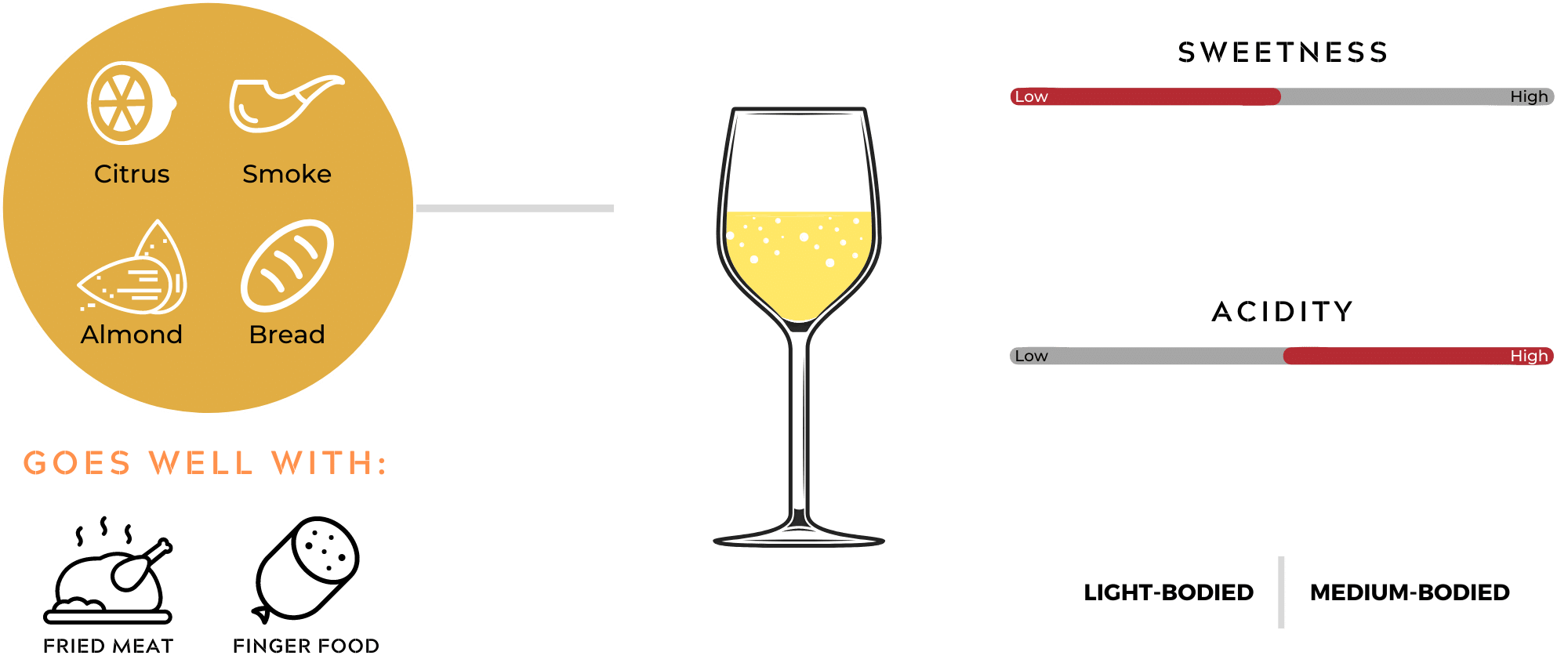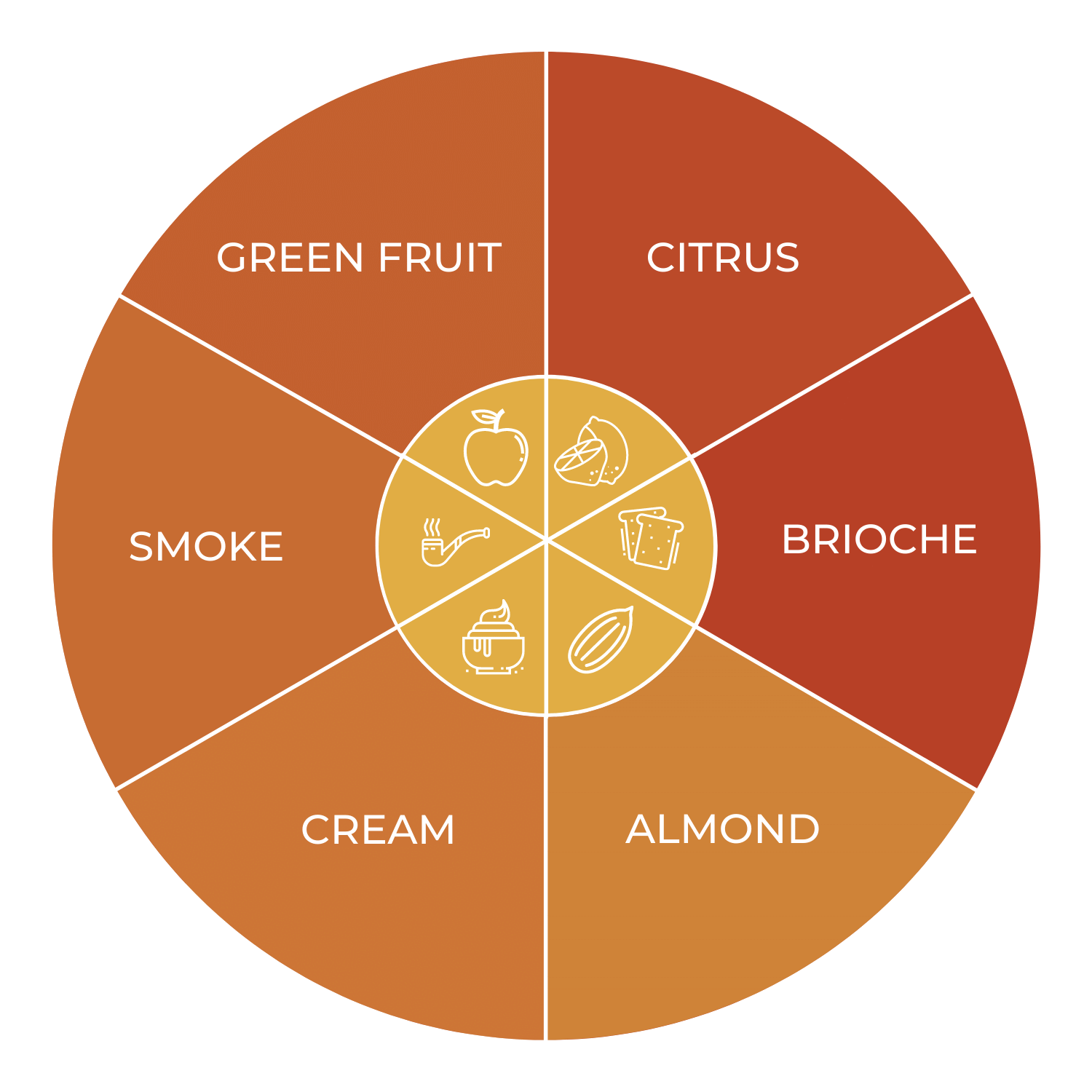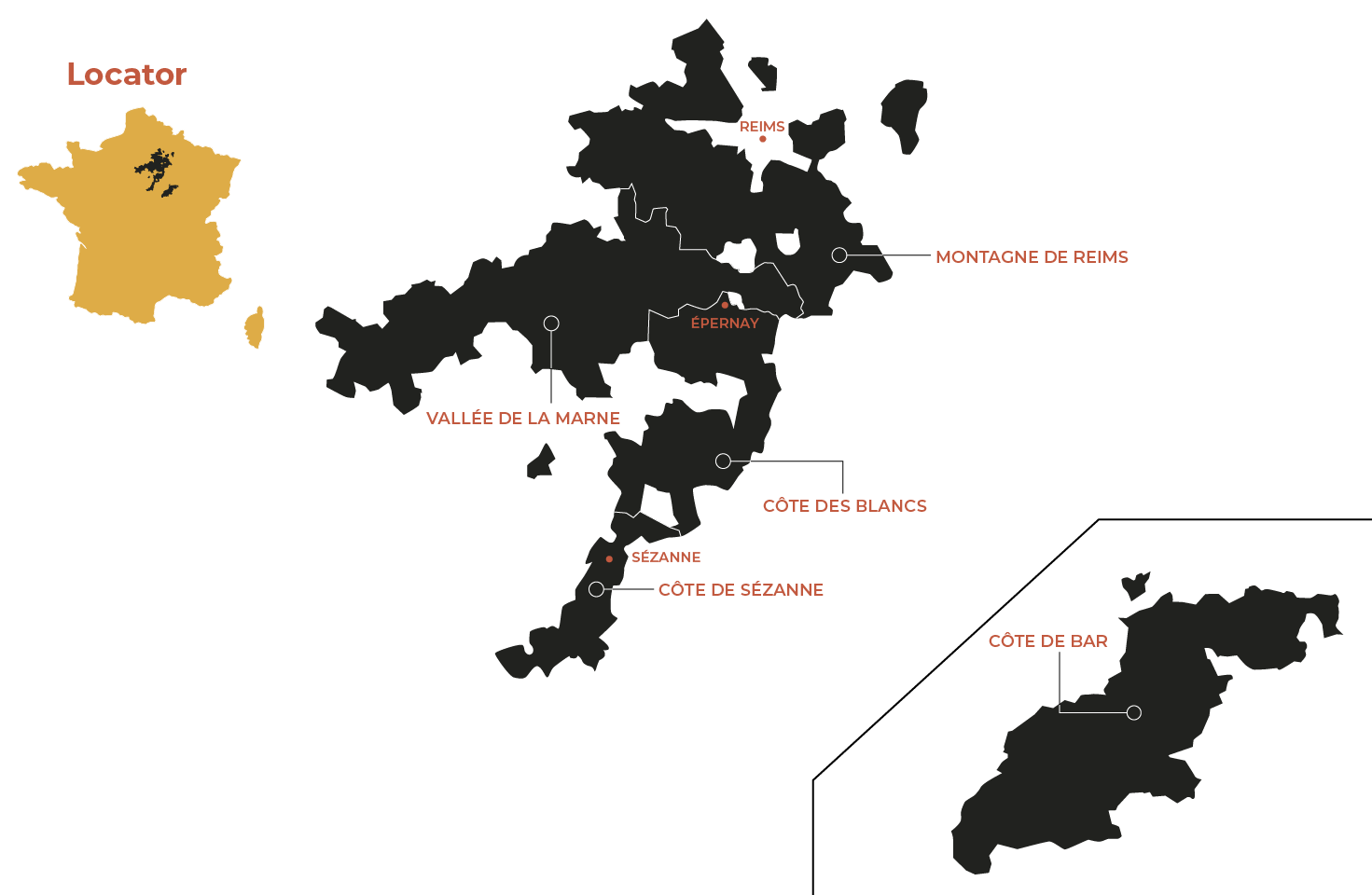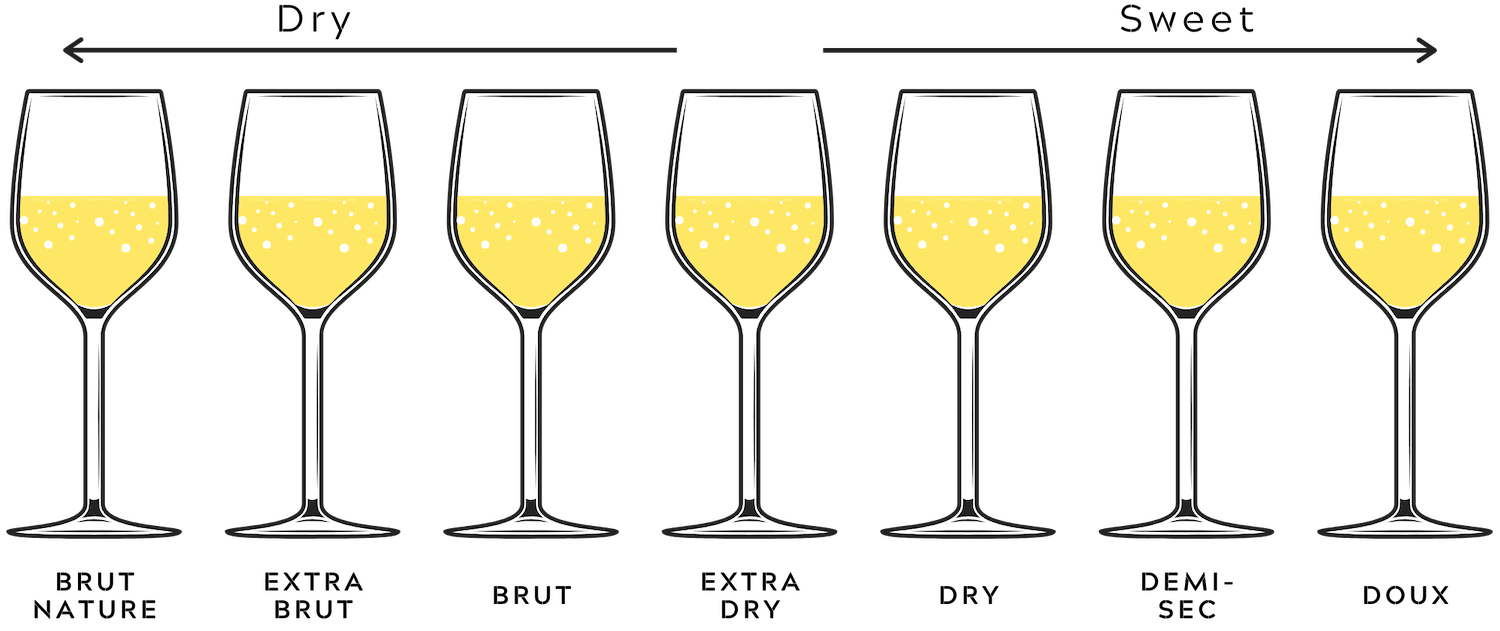Bottles of Champagne are easily the most internationally recognisable types of red, white, or sparkling wine that are found in almost every corner of the world.
Though beginning to understand Champagne can appear difficult, particularly if you’re not French, there are actually just a few key points to remember when venturing into tasting these wines that go a long way towards developing an appreciation of these wines.
For those looking to get a quick snapshot into how these wines often taste, and how they can be served alongside food, consider our graphic below, otherwise read on to learn more about this very prestigious category of sparkling wine.
Bottles of Champagne gain their name from the region from where they originate in France, being the Champagne wine region situated within the province of that name that lies in the north eastern area of the country.
Whilst wine production had been a part of the history of that area for centuries, dating back to the time of the Romans in fact, the production of the sparkling Champagne that we know today really didn’t start until the late 17th and early 18th centuries, after the death of King Louis XIV of France.
It is important to note that the wines produced in the area before this point were largely examples of still red table wines made from pinot noir grapes that, for all of the local winemakers efforts, could not easily match the acclaim and quality of those wines coming from the Burgundian wine region located just a bit further south.
The reason for this is largely down to the geographical differences between the two areas.
Whilst both are considered cool climates, the Champagne region is located further north than the Burgundian wine region, resulting in much colder winters that often resulted in the grapes produced there being higher in their levels of acidity and lower in their amounts of sugar.
Not only did it affect the ripeness of the grapes, it also meant that the yeast particles would often become inactive during fermentation when it was winter and only reactivate once the weather warmed up and after the bottle had been sealed, trapping carbonation dioxide within the final bottle of wine.
Whilst French winemakers in the area were initially very concerned by this, during the 17th and 18th centuries, the demand for sparkling wine from the Champagne region grew, particularly within Great Britain, where citizens were fascinated over the bubbles that the wines contained.
From this point, sparkling wine, and more specifically Champagne, grew in the public's perception as being a wine of luxury, nobility, and royalty, especially once it had been readily adopted by the French aristocracy.
For more on the history of the region and the development of these wines over time, consider reading this insightful article.
As bottles of Champagne come from only one small region in France, although wines made in a similar fashion can and are produced elsewhere, though not permitted to be labelled the same, one can be forgiven for thinking all of them taste the same.
Whilst many will exhibit similar common flavours, including almonds, brioche or bread, smoke, citrus, and other crisp fruit flavours, variances in their specific levels of sweetness and the dominant flavours present will alter depending upon the winemakers preference.
Explained in greater detail below, the taste of bottles of Champagne are perhaps best classified not only by their vintage and where the grapes used during production were sourced from, but also upon the amount of sugar levels contained within the wine, which can vary from less than a few grams to upwards of fifty grams per litre.
Irrespective of their levels of sweetness, bottles of Champagne are known for their fine, persistent bubbles, dry to semi-dry style, and light to medium bodied and often creamy-textured nature that makes them highly sought after as a premium drinking experience.
As discussed previously, any bottle of sparkling wine labelled “Champagne” must have originated from the wine-producing region of that name located in the north eastern area of France.
All of the wineries located within each of the villages in this area are given a classification under what is called the Cru System, which is supposed to help indicate the quality of the grapes that were used to produce the wine in the bottle, though the system is often challenged on the merits of this argument.
This site here offers a good explanation of how the Cru System works in its intricacies, however, it is most important to understand that only two classifications really exist, Premier Cru and Grand Cru, with those vineyards worthy of the distinction Grand Cru being considered the best.
Depending upon how you like your wine, bone-dry, dry, semi-sweet, or sweet, there is a bottle of Champagne out there that will fit your taste buds.
Explored below, the amount of sugar contained within a particular bottle will vary based upon the name provided on the label, with the order from driest to sweetest being brut nature, extra brut, brut, extra dry, dry, demi-sec, and doux.
Pairing food with any bottle of Champagne can prove to be a thoroughly rewarding and enjoyable experience. Whilst variances can occur between specific flavours and sugar levels, there are a few best practices that should be followed.
Bottles of dry Champagne (think brut nature to dry) often match best with poultry dishes, servings of lobster or crab, or other light seafood dishes, whilst moderately dry to sweet styles of Champagne (think demi-sec to doux) are well paired with soft blue cheeses, sweet fruit-based desserts, or even grilled seafood.
There's a bottle of Champagne out there for everyone. Here are some of the brands and bottles that we recommend you look out for the next time you're browsing online or in-store.
Learn how to pick the right bottle of Gewurztraminer wine for you and your tastes when browsing online or in-store in our beginners guide to the style with graphics.
With bottle shops expanding their range, we’ve taken the time to explain why some wines are and some are not vegan & organic in order to help you choose wisely.
Ready to begin your journey into the world of wine but don’t know where to start? Here’s our primer on what bottles & styles to try when just starting out.




